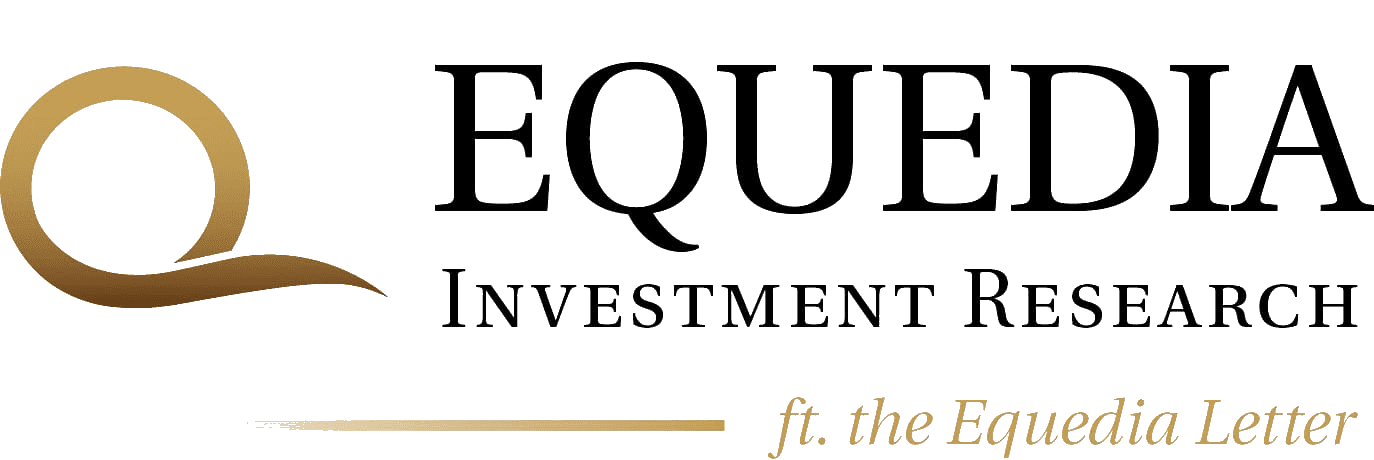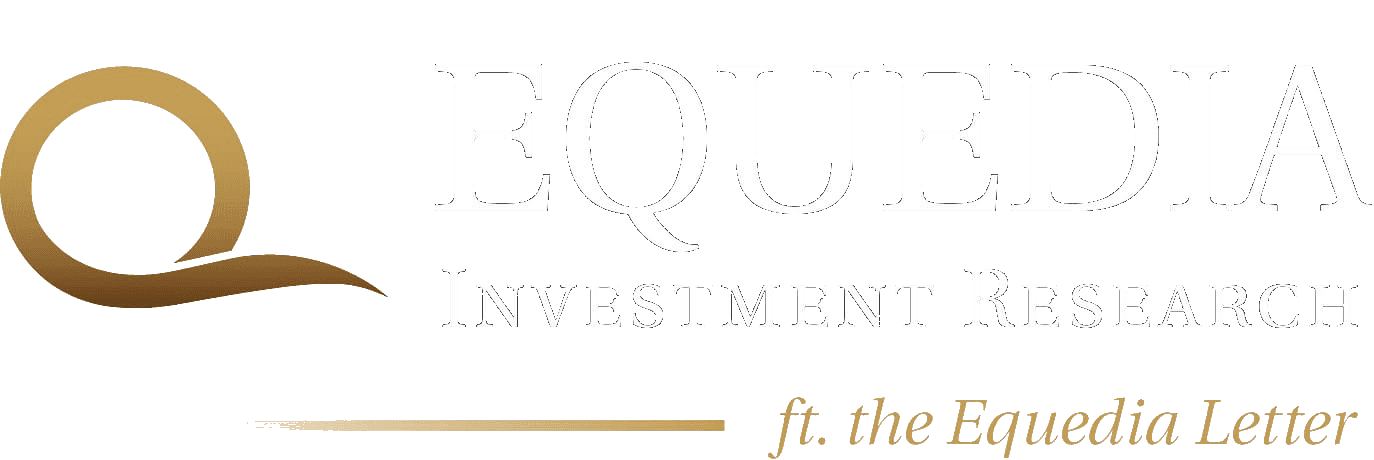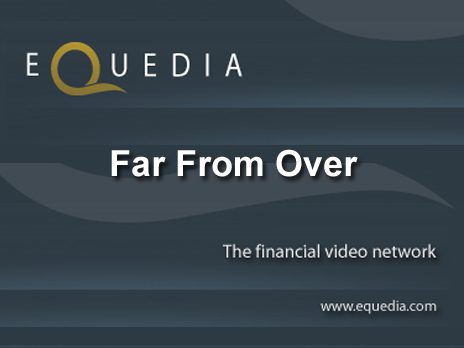*If you have not already subscribed to our weekly interactive newsletter, please visit: http://equedia.com/newsletter/
For the full interactive edition, please CLICK HERE
Usage: Feel free to post this article anywhere you’d like. Just be sure to follow the rules set forth in our usage agreement by CLICKING HERE
For the first time history the Federal Reserve has been forced to reveal secrets that it has never released in its 98-year existence. What it revealed will not only shock you, but will give you insight on how real world conspiracies work.
Before I open your eyes to these secrets, here are the results from last week’s survey, “Which Canadian Party Will You Vote For on May 2, 2011?“

The Conservatives led the way with a 70% landslide. It’s great to see the demographics of our readership and great to see all of the comments posted by our readers. You can read many of them here:
Click Here for Equedia’s Political Survey Results and Comments
At the height of the 2008 crisis on October 29, 2008, the US central bank lent up to $110 billion through its emergency “discount window,” an emergency fund only used when banks have nowhere else to go for borrowing. These emergency funds, along with trillions of dollars in emergency aid to U.S. and foreign banks as well as other companies, were kept secret from the American people. As the “People’s Bank,” it’s only fair that its citizens should know what is being done with their money. But that of course is never the case.
The Fed argued that naming banks that used its discount window could cause a self-fulfilling bank run prophecy, endangering the institutions and defeating the program’s purpose. As unethical as it sounds, I agree. What we don’t know can’t hurt us…
So the Fed kept their lending documents and practices hidden away from the world and the citizens it sought to protect. They kept secret the names of all the banks that drew emergency loans during the financial crisis…until now.
On Thursday, the Fed was forced to reveal the names of every bank that turned to the U.S. government’s emergency bailout program for help during the peak of the credit crisis.
Big U.S. banks, such as Wachovia and Morgan Stanley, took out short-term loans of $6 billion and $1.25 billion, respectively. Washington Mutual borrowed from the discount window on Sept. 18, 2008, with an initial loan of $2 billion. But it then borrowed another $2 billion every night until its collapse on Sept. 25, 2008 when it was finally bought out by JPMorgan.
The Federal Reserve warned that releasing details of its lending could lead to a rapid loss of public confidence in borrowers and possible bank failures. They were probably right. If these documents were released two years ago, the public might come to the conclusion that the banks were all going to fail. This would have undoubtedly caused a major bank run and the ultimate crash in the financial system.
Luckily, that didn’t happen.
Now that the banks are in much healthier positions, these recently released documents appear to have done little harm to any of the banks involved in the borrowing.
Since the unprecedented release of the documents, the KBW index of 24 banks has risen 1 percent. JPMorgan Chase (NYSE: JPM), which borrowed at least $5.9 billion from the discount window in 2007 and 2008, gained 0.5 percent Friday. Morgan Stanley (NYSE: MS), which borrowed as much as $6.9 billion in October 2008, fell just 0.2 percent.`(Keep in mind that these numbers are strictly based only on the “discount window” borrowing, and does not include other numbers. For example, along with the $5.9 billion, JPMorgan also accepted $25 billion from the U.S. Troubled Asset Relief Program, better known as TARP.)
While the information released has had little effect in the financial sector, it doesn’t mean the banks are in the clear.
There were thousands of pages released which will take time to sift through. The list of those who tapped into the discount window includes many extremely shocking names, from foreign industrial competitors to hedge funds in tax-haven nations to various powerful Wall Street figures (and even some of their relatives!) Until they are sorted out and reviewed completely, I wouldn’t jump into any particular banks just yet as the market hasn’t had time to truly absorb the information. However, at this point, there doesn’t appear to be anything major that could harm them. The borrowing did happen more than two years ago and a lot of it has been paid back.
The amount of money lent out through the discount window during the peak of the crisis doesn’t surprise me one bit. Nor does it have me concerned. But what I am about to reveal just might shock you.
The biggest recipients of the discount window funds were foreign – not American – institutions that benefited from hundreds of billions of taxpayer dollars. During the crisis’ busiest week, 70% of the $110+ billion borrowed through the discount window went to overseas banks.
That’s right. They were used to bailout foreign banks.
Dexia, Erste Group and Depfa, were among the top foreign banks who tapped into the discount window. Other big foreign borrowers were Norinchukin Bank of Japan, Bank of Scotland, and Germany’s Landesbank Baden-Wurttemberg and France’s Societe Generale.
But get this. Among the 25,000+ pages released by the Fed were documents showing that Arab Banking Corp. (ABC) had borrowed more than $35 billion from the U.S. Federal Reserve in the 18 months after Lehman Brothers collapsed with interest rates as low as 0.25%. Guess who is now the majority owner of the ABC? Drum roll please…
The Central Bank of Libya
During the crisis and until now, the Central Bank of Libya has somehow managed to grow its ownership in the ABC from a mere 29% to a majority controlling 59% to date.
To make matters worse, the Fed’s assistance to the now Libyan-controlled bank did not end there. On March 4, the Treasury Department exempted ABC from economic sanctions and any other bank that is owned or controlled by the Libyan government operating under the laws of a different country. How messed up is that?
I am not done.
All of the loans to the ABC were backed by collateral in U.S. Treasury securities purchased by the ABC. In other words, at the same time that the ABC was borrowing money from one arm of the U.S. government for next to nothing, it was also lending money to the U.S. Treasury and receiving a higher interest rate.
How messed up is that?
Why in the world would the US lend money overseas when it has some very serious financial problems on its own turf? Why would the US lend money to foreign countries when it is suffering from failing mortgages and its citizens are losing their homes?
Therein lies the controversy for which I am about to reveal.
It’s all about oil. You scratch my back, and I’ll scratch yours.
Call me a nut bar, a conspiracy theorist, or whatever you want. At the end of the day, the nation who controls the world’s oil supply is the world power.
The attacks in Libya and the unrest in the Middle East has everything to do with the control of the world’s oil supply. Yes, it also has to do with regime changes and political uprising, but at the end of the day the US is in there for one reason: Oil.
Without going into a 1000-page report, the premise is simple: The US helps Libya and in return gains political power and specialized trade agreements with an important oil country. The new trade agreement and investment framework came into place immediately after the bailouts on May 20, 2010 and also includes help from Washington to advise Libya on their WTO (World Trade Organization) membership bid. See Press Release Here
Coincidence? I don’t think so. Doing some simple research will show you how this process has happened many times over in the past. There’s no such thing as a free lunch – especially not from the Fed or the US government.
I don’t care what type of solar power or new energy technology is out there right now, the fact is oil will remain the number one source of energy for many, many years.
While there are alternatives to oil on the horizon, we’ll need to see at least $150 oil for a sustained period before any of them would start to become a viable alternative. Even if we saw $150 oil, the costs to bring alternative sources into play would be staggering. Furthermore, if alternative energy sources become viable with oil over $150, it would also mean that the demand for oil would shift and oil prices would sink. This, in turn, will drop oil prices and make those so-called “viable” alternatives, not so viable anymore.
The fact is we need oil. HSBC just warned that the world has roughly 50 years of oil left. It believes that the emerging market growth will put another 1 billion cars onto the road by 2050. That is on top of the 700 million on the road today (see Actions Speak Louder Than Words). China will lead the way and it has already begun to accumulate oil assets in preparation for their growth. (see Actions Speak Louder Than Words)
While oil may trade sideways for a while with the unknown outlook for the Middle East, oil is here to stay. As I mentioned in the last newsletter (see The Controversy and Far From Over), many of the major oil stocks are more than capable of keeping their dividends consistent with $80 oil. At current prices, it leaves a lot of room for growth in these stocks.
Until an alternative energy source becomes viable -which is a long time from now, or if oil hovers over $150 for a sustained period – oil will remain number one.
Oil has already climbed past $105 and closed in on $110, as I predicted a few weeks back in The Controversy. Over the next five years, we could see this number increase substantially along with the rise of inflation.
Keep your eyes on energy stocks, especially those who pay good dividends. Many of them, such as Provident Energy Trust have done nothing but climb in the last six months. I think Suncor, Encana, and Chesapeake Energy, despite nearing their 52-week highs, still have room to climb. However, I would be careful short term as swings in oil and gas prices could swing these stocks slightly to the downside.
Agricultural stocks are also continuing their bullish climb and sees no signs of a slowdown. You should be able to ride this momentum to the upside, as long as you don’t get greedy.
The recent release of the discount window bailout by the Fed has given the world another reason to be cautious of the world’s banking systems. It gives the world another reason to question fiat and digital currencies while putting more faith into gold and silver. I expect both gold and silver to climb next week.
Until next week,
Ivan Lo
Managing Director, Equedia Weekly
Equedia Network Corporation
www.equedia.com

Questions?
Call Us Toll Free: 1-888-EQUEDIA (378-3342)
We are biased towards Kiska Metals and Minco Gold because we own shares of both companies. We are also biased because they are a client of ours and we own options in both of the Companies. Our reputation is built upon on the companies we feature. That is why we invest in every company we feature in our Special Report Editions, including Kiska Metals and Minco Gold.
For the full interactive newsletter and report, please follow this link: http://archive.constantcontact.com/fs005/1102243211822/archive/1105029635212.html
If you have not already subscribed to Equedia Weekly, you may sign up here: http://equedia.com/newsletter/
Forward-Looking Statements
This Newsletter and report contains certain forward-looking statements that may involve a number of risks and uncertainties. Actual events or results could differ materially from current expectations and projections. Except for statements of historical fact relating to the project, certain information contained herein constitutes “forward-looking statements”. Forward-looking statements are frequently characterized by words such as “plan”, “expect”, “project”, “intend”, “believe”, “anticipate” and other similar words, or statements that certain events or conditions “may” or “will” occur.
Except for the statements of historical fact, the information contained herein is of a forward-looking nature. Such forward-looking information involves known and unknown risks, uncertainties and other factors which may cause the actual results, performance or achievement of the Company to be materially different from any future results, performance or achievements expressed or implied by statements containing forward-looking information.
Although the Company has attempted to identify important factors that could cause actual results to differ materially, there may be other factors that cause results not to be as anticipated, estimated or intended. There can be no assurance that statements containing forward looking information will prove to be accurate as actual results and future events could differ materially from those anticipated in such statements. Accordingly, readers should not place undue reliance on statements containing forward looking information. Readers should review the risk factors set out in the Company’s prospectus and the documents incorporated by reference.
Cautionary Note to U.S. Investors Concerning Estimates of Inferred Resources
This presentation uses the term “Inferred Resources”. U.S. investors are advised that while this term is recognized and required by Canadian regulations, the Securities and Exchange Commission does not recognize it. “Inferred Resources” have a great amount of uncertainty as to their existence, and great uncertainty as to their economic and legal feasibility. It cannot be assumed that all or any part of an Inferred Resource will ever be upgraded to a higher category. Under Canadian rules, estimates of “Inferred Resources” may not form the basis of feasibility or other economic studies. U.S. investors are also cautioned not to assume that all or any part of an “Inferred Mineral Resource” exists, or is economically or legally mineable.
Disclaimer and Disclosure
Disclaimer and Disclosure Equedia.com & Equedia Network Corporation bears no liability for losses and/or damages arising from the use of this newsletter or any third party content provided herein. Equedia.com is an online financial newsletter owned by Equedia Network Corporation. We are focused on researching small-cap and large-cap public companies. Our past performance does not guarantee future results. Information in this report has been obtained from sources considered to be reliable, but we do not guarantee that it is accurate or complete. This material is not an offer to sell or a solicitation of an offer to buy any securities or commodities.
Furthermore, to keep our reports and newsletters FREE, from time to time we may publish paid advertisements from third parties and sponsored companies. We are also compensated to perform research on specific companies and often act as consultants to many of the companies mentioned in this letter and on our website at equedia.com. We also make direct investments into many of these companies and own shares and/or options in them. Therefore, information should not be construed as unbiased. Each contract varies in duration, services performed and compensation received.
Equedia.com is not responsible for any claims made by any of the mentioned companies or third party content providers. You should independently investigate and fully understand all risks before investing. We are not a registered broker-dealer or financial advisor. Before investing in any securities, you should consult with your financial advisor and a registered broker-dealer. The information and data in this report were obtained from sources considered reliable. Their accuracy or completeness is not guaranteed and the giving of the same is not to be deemed as an offer or solicitation on our part with respect to the sale or purchase of any securities or commodities. Any decision to purchase or sell as a result of the opinions expressed in this report OR ON Equedia.com will be the full responsibility of the person authorizing such transaction.
Again, this process allows us to continue publishing high-quality investment ideas at no cost to you whatsoever. If you ever have any questions or concerns about our business or publications, we encourage you to contact us at the email or phone number below.
Please view our privacy policy and disclaimer to view our full disclosure at http://equedia.com/cms.php/terms. Our views and opinions regarding the companies within Equedia.com are our own views and are based on information that we have received, which we assumed to be reliable. We do not guarantee that any of the companies will perform as we expect, and any comparisons we have made to other companies may not be valid or come into effect. Equedia.com is paid editorial fees for its writing and the dissemination of material and the companies featured do not have to meet any specific financial criteria. The companies represented by Equedia.com are typically development-stage companies that pose a much higher risk to investors. When investing in speculative stocks of this nature, it is possible to lose your entire investment over time. Statements included in this newsletter may contain forward looking statements, including the Company’s intentions, forecasts, plans or other matters that haven’t yet occurred. Such statements involve a number of risks and uncertainties. Further information on potential factors that may affect, delay or prevent such forward looking statements from coming to fruition can be found in their specific Financial reports.
Equedia Network Corporation is also a distributor (and not a publisher) of content supplied by third parties and Subscribers. Accordingly, Equedia Network Corporation has no more editorial control over such content than does a public library, bookstore, or newsstand. Any opinions, advice, statements, services, offers, or other information or content expressed or made available by third parties, including information providers, Subscribers or any other user of the Equedia Network Corporation Network of Sites, are those of the respective author(s) or distributor(s) and not of Equedia Network Corporation. Neither Equedia Network Corporation nor any third-party provider of information guarantees the accuracy, completeness, or usefulness of any content, nor its merchantability or fitness for any particular purpose.












